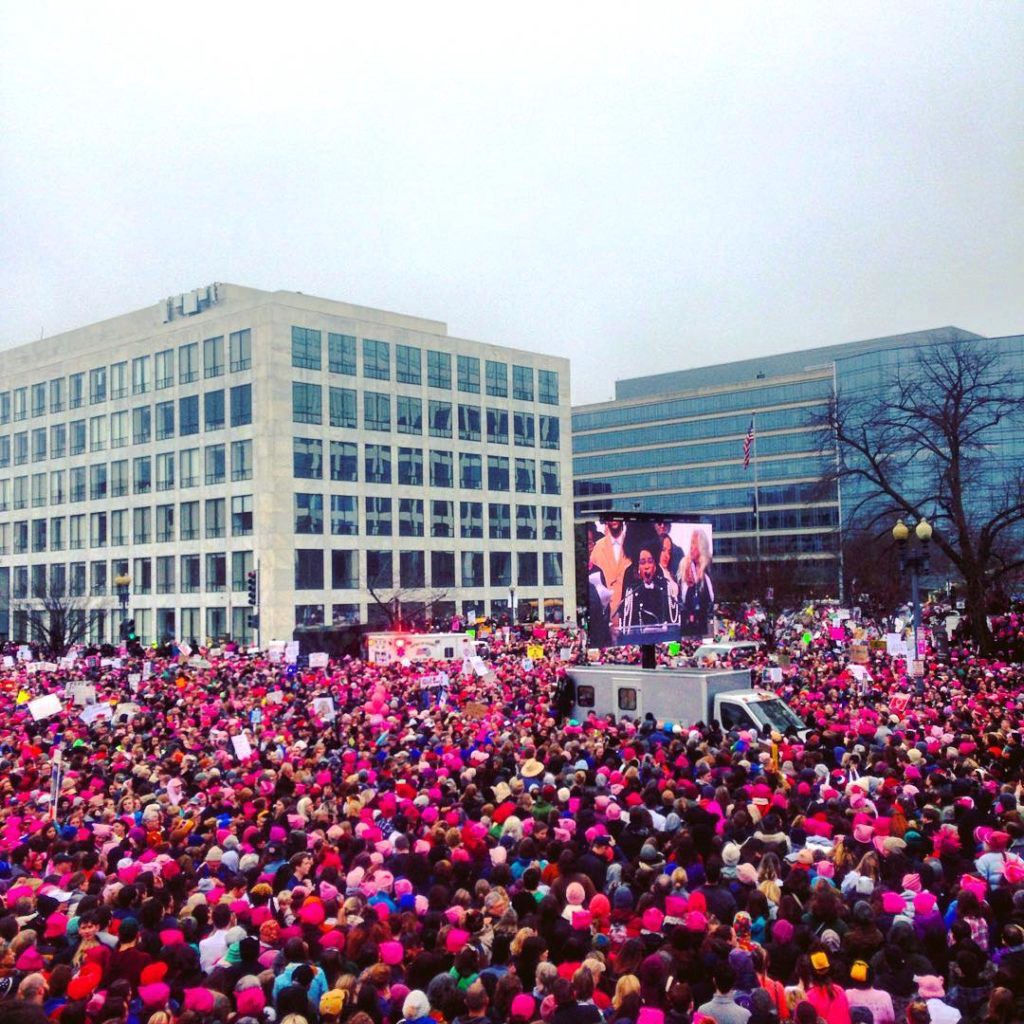Millions of people worldwide have rallied in support of the Women’s Movement, with critics debating over the validity of the associations made by some visual symbols of solidarity. While ascribing a certain symbol or color to a cause can help empower and spread awareness, it seems it sometimes can result in misguided representations or interpretations of the cause when it goes down in history. Meant to add visual shock value by bringing order and consistency, dressing alike has become a common occurrence in social movements. Several colors have emerged both recently and historically as symbolic of efforts for women’s equality, including pink, red and white.
While pink traditionally has represented support for breast cancer, many recent rallies that have taken place in protest of the Trump Administration and its platform have brought a converted attention to the color pink. Some see this as representative of the modern Women’s Movement, stemming from the pink “pussy hats” worn by many protesters. Finding lack of cohesion about what color has come to represent the cause, some argue that it is misleading to ascribe such meaning to any one color.
While one color has not consistently dominated others as the end-all representation of Women’s advancement, it is a tool with which the cause is certainly familiar. Women’s movements have historically utilized the power of symbolic color unification, using such colors as purple, white, green and gold to advance their cause. Red has been recognized as the color of significance for International Women’s Day, which in 2017 was a day that saw many protests and gatherings in solidarity with women’s rights.
Alternatively, Hillary Clinton reignited the symbolism behind a color that has been historically used by the Women’s suffrage movement, to whom it was thought she paid homage in a stunning white pant suit as the country’s first female presidential candidate. This is in reference to iconic days past, when throngs of women donning white dresses paraded their localities calling for the right to vote. Using white to represent the cause brings conflict as well, as some feel that it has racial implications. As the Women’s Suffrage movement has harried history of racism, known in early years to exclude sisters of color, the search for a representative color continues.
Long have women come together to organize in the name of a cause, proving time and time again to be a force to be reckoned with. While methods have varied through the generations, women continue to ban together at all levels to demand equality, maintaining to fight for equal pay and opportunity. With suffrage earned after a long-fought battle, it is important to remember that the cause behind the movement is more important than the movement itself. Many get so caught up in how to properly represent what they are passionate about to others, that they forget the importance of what they are fighting for. Women’s rights are human’s rights. Never before has our generation seen such a coming together of the masses for the fight for equality; standing up is more important than standing out.
Originally published at medium.com



